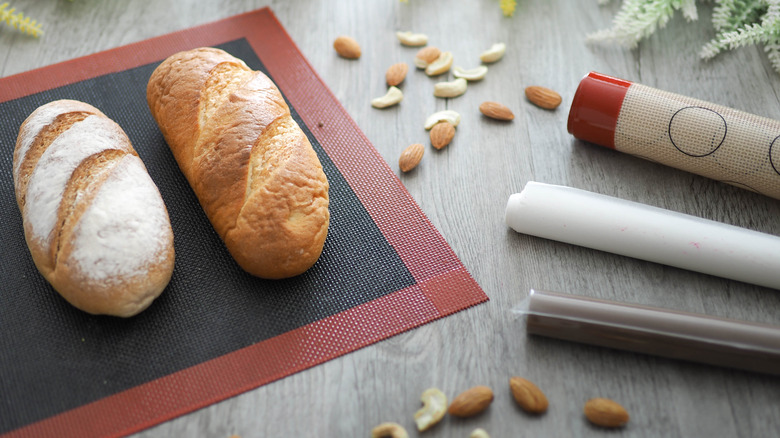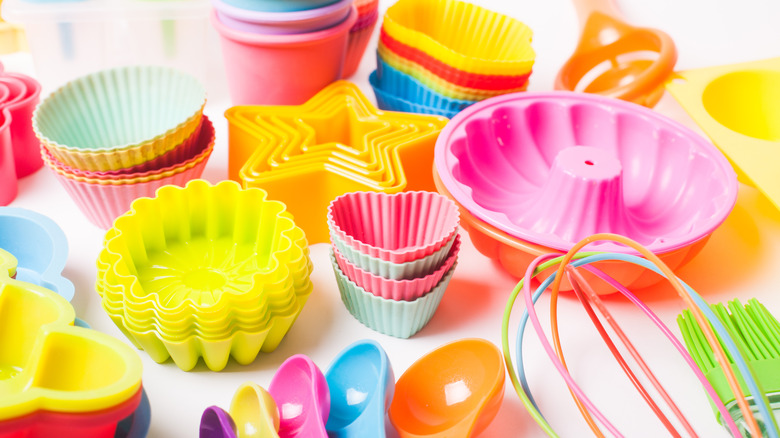Why Your Silicone Kitchenware Makes Food Taste Like Soap
In recent years many home chefs have come to embrace silicone cookware in their kitchens. And why not? It allows them to make fun shaped cakes and ice cubes without fighting to get them out of pans in one piece, gets rid of wasteful paper muffin and cupcake liners, and makes cleanup easy on baking and roasting sheets. The Spruce Eats notes that silicone cookware has become popular because it can withstand intense heat, is durable, stores easily, and makes for fast clean ups.
Unfortunately, even though they can last a long time, many people have come to notice a problem with their silicone pans and food mats: They can start to leave a bad taste as they get older. As Food 52 notes, over time, silicone mats and pans can start to smell, look, and taste "funky" because of the very thing that makes them so handy: their non-stick, heat-resistant makeup. As the cooking materials heat up, the silicone molecules expand and absorb the oils from whatever is being cooked with them. Once they cool down, that absorbed oil — along with its smells and tastes — becomes somewhat embedded in the material, making the silicone start to look oily or sticky over time and creating the possibility of old, musty flavors leaking into whatever you make next.
The same also applies to dish soap, which often contains oils that get sucked into the mat (via oogaa).
Battling bad tastes
So how do you avoid leftover odors polluting your freshly cooked food? The first step, according to oogaa, is to avoid dish soaps with moisturizers, essential oils, or antibacterial agents, when cleaning your silicone, especially since most silicone products are antibacterial and anti-fungal by nature. The brand also recommends using lemon juice or vinegar to scrub down silicone cookware before washing in hot water.
Food 52 recommended several methods, including coating the cookware with a paste made of baking soda and warm water and allowing it to bake for 10 minutes at 350 degrees Fahrenheit beforehand to release oils before plunging them into a bath of hot water and white vinegar. Meanwhile, The Kitchn recommends baking your bakeware, though it suggests scrubbing the mats or pans down with a sponge and soapy water first, then depositing them in the oven at 350 degrees Fahrenheit. After about an hour, smell the pans. If there is any lingering odor, replace the pan in the oven and do it again for 20 additional minutes and repeat until the stink is gone.
Finally, if you successfully remove the stink from your pans and don't want to worry about this again, DVO recommends simply using parchment paper and traditional cookware for particularly smelly items like fish to avoid a lengthy deodorizing process.

